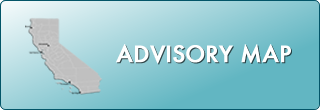
PBDEs in Fish and Shellfish
What and where are PBDEs?
- PBDEs (polybrominated diphenyl ethers) are a class of flame retardants once used in household products such as couches, mattresses, televisions, cell phones, computers, car seats, and dashboards.
- PBDE use has been phased out in recent years. However, PBDEs may still be found in older products, and in new products made from black recycled plastic.
- PBDEs do not break down easily in the environment, and can accumulate in fish.
-
Fish and shellfish often contain higher levels of PBDEs than other foods. Fish consumption is not a major route of exposure to PBDEs. But exposure to PBDEs may be higher for people who eat a lot of fish.
What is the health concern for humans?
- High levels of PBDEs may:
-
Interfere with the body’s natural hormones.
-
Cause harm to the developing fetus or infant, including effects on later learning and behavior.
-
Decrease fertility.
-
Increase cancer risk.
-
Should I still eat fish?
-
Yes! Low-contaminant fish are an important part of a well-balanced diet.
-
Fish are a good source of protein and vitamins, and a primary source of heart-healthy omega-3 fatty acids.
-
Eating two servings of fish per week is good for you, according to the American Heart Association.
-
If you are pregnant, eating low-contaminant fish may help your baby’s brain develop.
If PBDEs are present, which fish pose the greatest risk?
-
Fatty fish, bottom feeders, and fish that eat other fish.
-
Larger and older fish.
How can I reduce my risk?
-
If you catch your own fish, follow the Office of Environmental Health Hazard Assessment’s (OEHHA) fish advisories for California water bodies.
-
Trim the fat, remove the skin, and fillet the fish before cooking. Eat only the skinless fillet (meat). Do not use the fat, skin, organs, juices, or the whole fish or shellfish, in soups and stews.
-
For crab and lobster, remove the internal organs (“guts,” “butter,” or “tomalley”), and rinse out the body cavity before cooking.
-
Bake, broil or grill fish in a way that lets the juices drain away. Throw away the cooking juices.
-
Boil or steam crab and lobster, and discard the cooking liquid.
Where can I learn more?
Documents
Fish, Incident Response, Seafood Safety, and Harmful Algal Bloom Section
Sacramento Office
1001 I Street
Sacramento, CA 95814
Phone: (916) 324-7572
Fish@oehha.ca.gov


